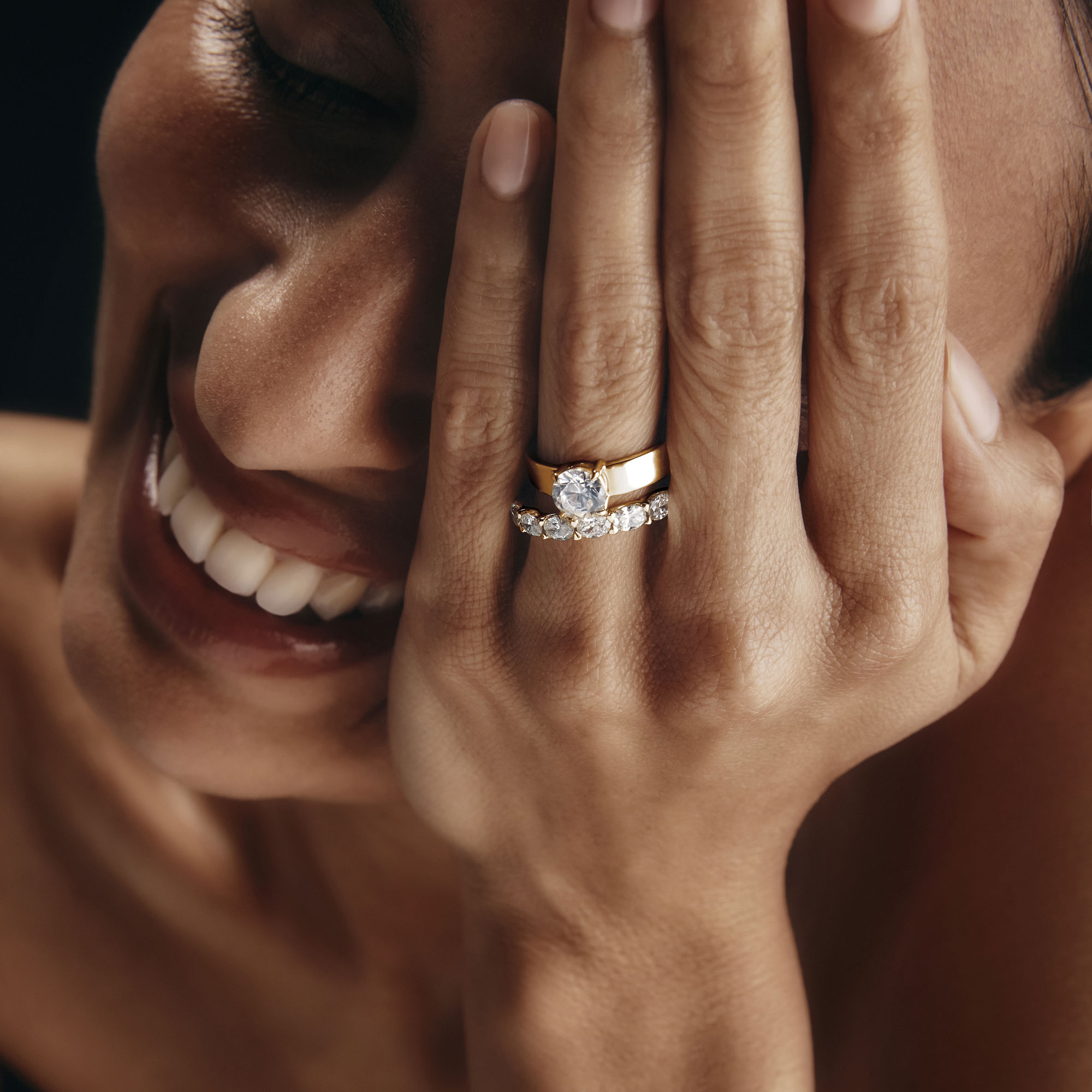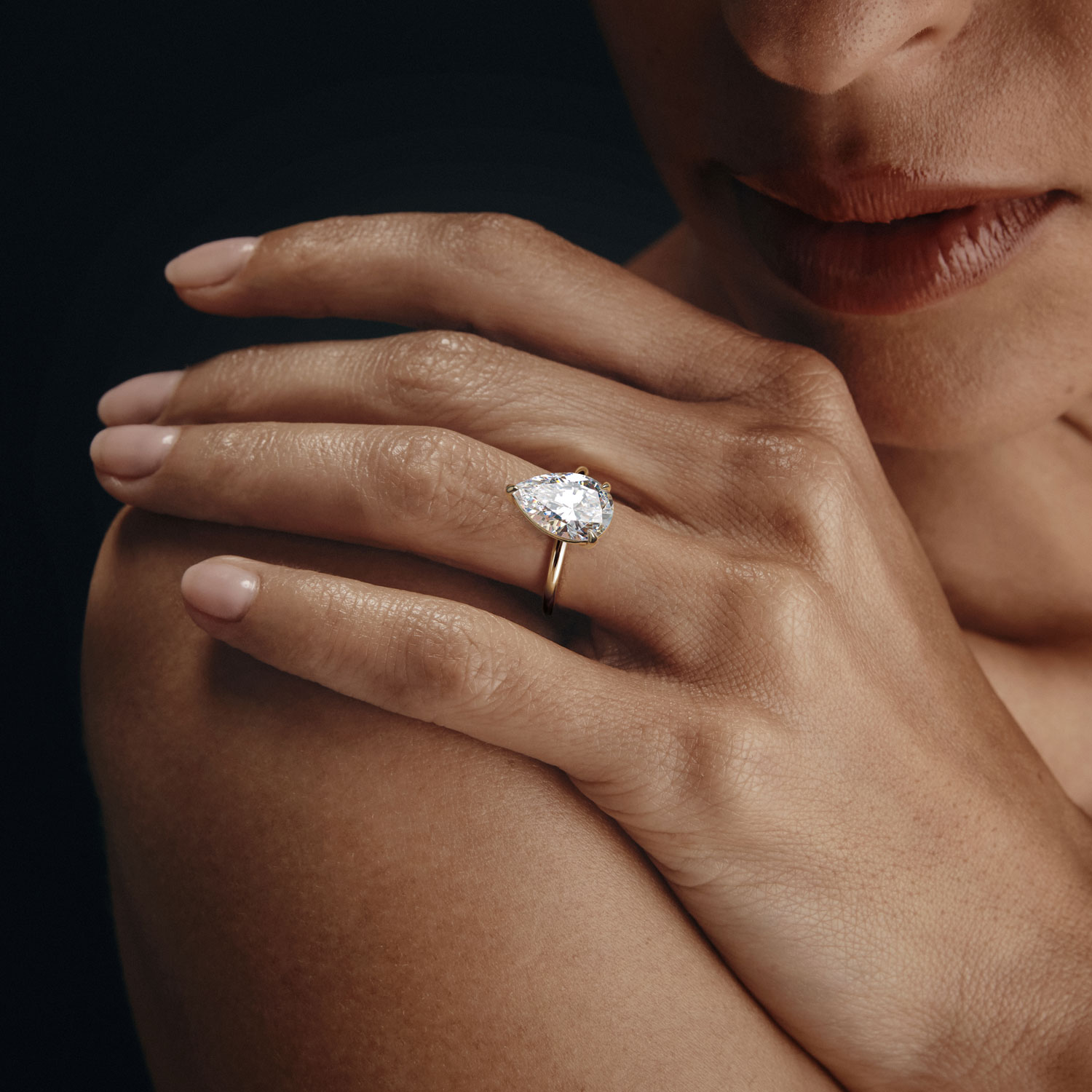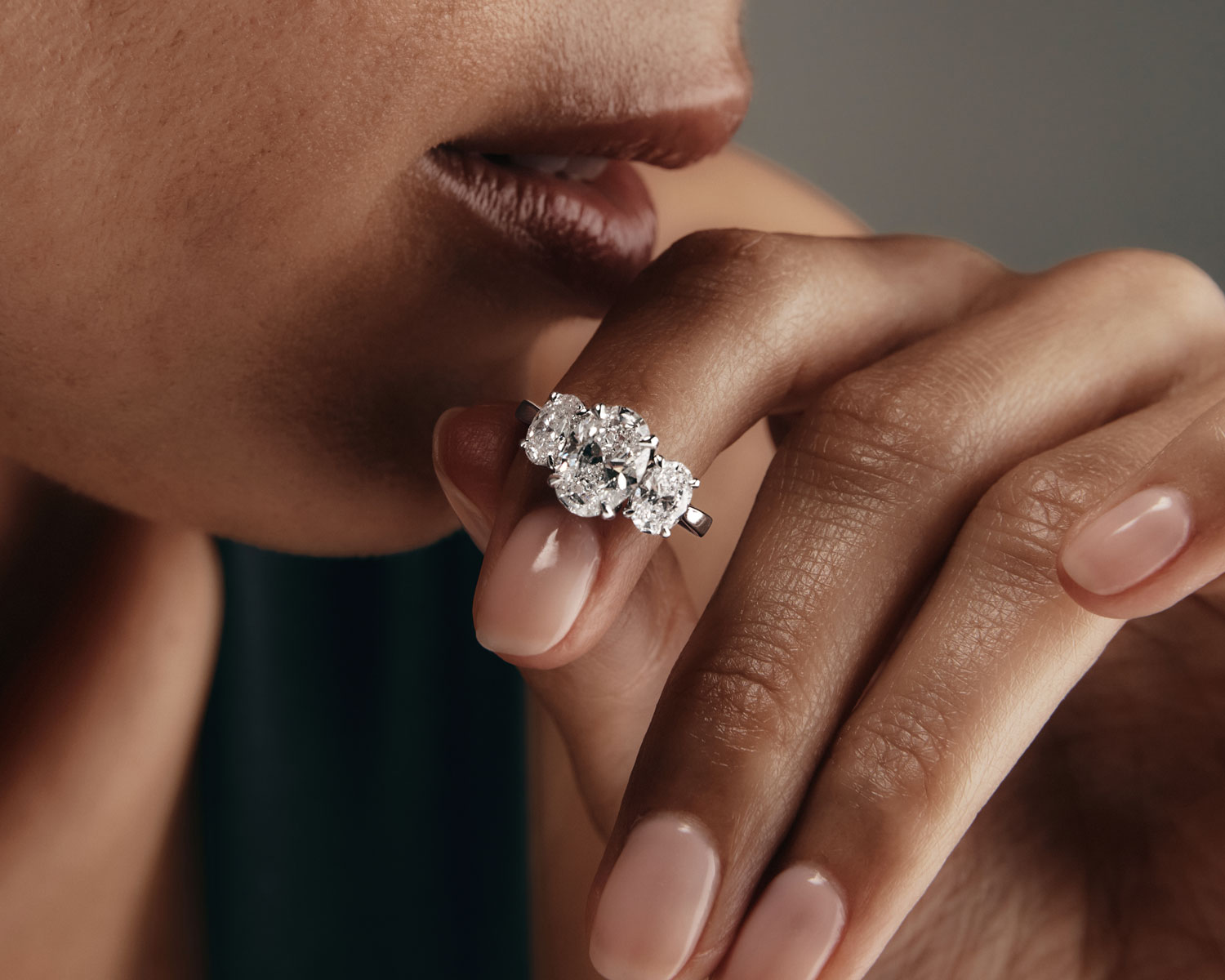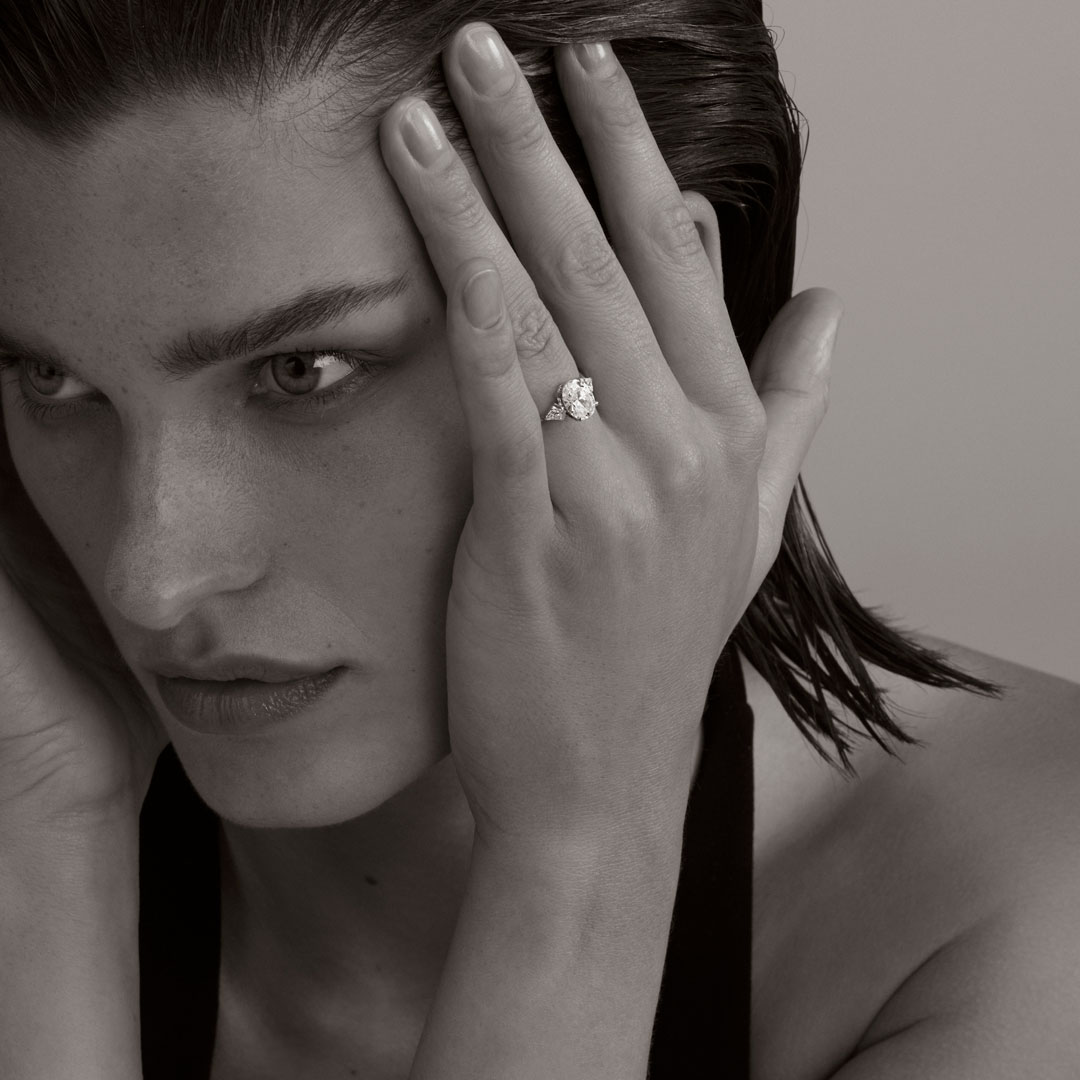Your Guide to Diamond Colour
Your TenSevenSeven engagement ring becomes intrinsically yours, with your choice of unique diamond. Selecting the perfect diamond for your forever-piece takes in multiple considerations, from its type and shape to the Four Cs.
The Four Cs of diamonds are Cut, Colour, Clarity, and Carat. In this article, we’ll deep dive into diamond colour: including the diamond colour scale and how colour influences the overall appearance and quality of your diamond
What are the diamond colour grades?
Diamond colour is graded on a scale from D – Z, an industry standard scale created by the Gemological Institute of America (GIA).
A higher colour grade indicates fewer traces of colour, and in white diamonds, it is this lack of colour that’s most valued. Fancy coloured diamonds, such as blue, pink, or yellow are not graded on this scale.
At TenSevenSeven, we pride ourselves on offering the finest edit of natural and laboratory-grown diamonds for your bespoke ring. Our curated range includes only diamond colour grades from D – I, assuring you of a beautiful stone.
Colourless diamonds (D, E, and F grades) are the most prized. Near Colourless diamonds (G, H, and I) are still considered premium stones, with very faint traces of colour that are generally undetectable to the naked eye.
Diamond Colour Scale
A deeper dive into the colour grades available at TenSevenSeven:
D - Colourless
The most rare and sought-after colour in white diamonds, appearing completely colourless.
E - Colourless
Almost indistinguishable from D-grade to the naked eye, E-grade diamonds have very slight traces of colour visible only under magnification.
F - Colourless
Slightly more colour than E-grade diamonds, F-grade diamonds still appear nearly colourless to the naked eye.
G - Near Colourless
With slight traces of colour visible only under close inspection, G-grade diamonds are a popular choice for engagement rings as they offer a balance of value and quality.
H - Near Colourless
A slight yellow tint may be visible in certain lighting conditions.
I - Near Colourless
Slight visible colour.


How important is diamond colour?
Diamond colour is one of the Four Cs to consider when choosing your perfect diamond. While colour does influence the overall appearance of your diamond, both Colourless and Near Colourless diamonds are considered high quality, beautiful stones. Provided your diamond falls into at least the Near Colourless scale, any traces of colour are not easily visible to the naked eye.
As with all diamond characteristics, colour is a matter of your personal preference. While some prefer the bright, pure white of a Colourless diamond, others may love the hint of natural warmth provided by slight traces of yellow or brown hues.
The cut of your diamond plays a more important role in the appearance of your diamond. An expertly cut diamond shape with multiple, small facets such as round, oval, marquise, or pear cuts, can help to mask some traces of colour with their scintillating play of light. Factors such as colour and clarity are more important in a diamond with a simpler facet structure, where these elements will be more apparent. Colour will also be slightly more perceptible in larger diamonds.
Which diamond colour grade is considered the best?
In white diamonds, D is the highest possible colour grade. This depicts a diamond which is completely colourless, offering a radiant white appearance. Diamonds with a colour grade of E or F are also considered Colourless, meaning any faint traces of colour will not be visible except under magnification.

Which diamond colour is the rarest?
The rarest diamond colour is so uncommon that it is not generally associated with diamonds at all: red. Fancy red diamonds feature an extraordinary, deep scarlet hue somewhat similar to rubies. This colour occurs due to a rare change in the diamond’s crystal structure as it forms, and there are believed to be less than 30 fancy red diamonds in existence.
In white diamonds, truly Colourless stones (D grade) are the rarest. Most diamonds form with some traces of yellow or brown hues, however faint, so a completely colourless stone is a rarity and highly valued.
Trio Setting
The trio, or three-stone setting is an heirloom favourite. As its name suggests, this ring style features three diamonds or stones, which are thought to represent the past, present, and future of your relationship. The stones are most often secured with a prong or claw setting.
At TenSevenSeven, our modern trio ring designs feature pear, baguette, kite, emerald, or oval cut side diamonds for a range of unique silhouettes. Make them authentically yours with a complementary or contrasting centre diamond shape of your choosing.
Step into our TenSevenSeven atelier and discover our meticulously designed engagement ring settings, ready to be personalised and made uniquely yours.


Discover our full range of beautifully designed ring settings, and find the perfect canvas to build your bespoke engagement ring.
